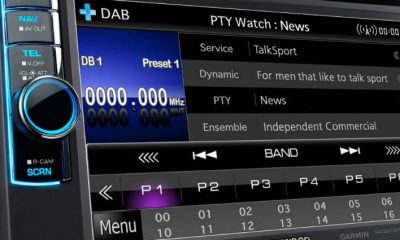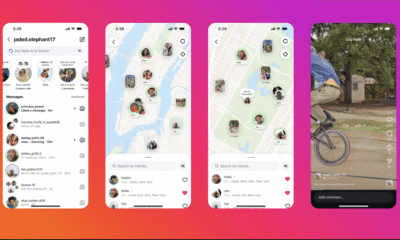News
Welcome Aboard Internet Radios
[newsheader]

Few of the popular internet radios: iTunes, Pandora, 8Tracks, Last.FM, Gaana.com, Nokia MixRadio
Welcome Aboard Internet Radios
Globally, online radios started getting popular with iTunes, Spotify and Pandora since the early 2000s. In India, noticing a phenomenal rise in the number of internet users, online radios like 8Tracks, India.FM and Gaana.com have found an ardent following. In fact, the potent market is so fertile that tech giant Microsoft recently launched Nokia MixRadio on Indian shores. soundplunge_test takes a look at the growth of internet radio in India.
Back in the 60s in UK, illegal radio stations delivered rock and roll and political messages from the middle of the ocean, aboard a ship. The Queen wasn’t the happiest person as these radios propagated rock and roll instead of traditional jazz, along with slices of sexual banter, and so ordered for the ship to be brought down. But these pirates never revealed their coordinates and continued riding over the North Sea irreverently indifferent to the establishment. As time passed, popularity rocketed and the radio jockeys on-board were subjected to flattery of the highest order and attained celebrity status. Eventually, when the police caught them and took these alleged law-breakers to task, all that remained was the cherished moments in the hearts of its innumerable fans. The Philip Seymour Hoffman starrer Pirate Radio (released in 2009) gave us a glimpse into the madness raved by illegal radios. The Robin Williams starrer Good Morning, Vietnam is another classic that exemplifies the above said phenomenon. What did all this mean back in the 60s? That rock and roll was such an integral part of everyday life that music through radios preceded regard for the establishment.
In India however, during that era, a radio was the only few mass reaching devices with TVs meant for the elite, and audiences therefore depended on it for daily news, music and sports updates. Nearly forty years hence, the 2000s saw a breath-taking growth in the number of internet users. A statement issued by TRAI in 2013 said, “A year ago (2012), there were around 20 million internet subscribers of which 12 million had broadband.” This globetrotting population wants to connect with international music, be it pop of the Rihanna variety, EDM of the Avicii category, or unrivalled world folk music. Music on the internet has had a huge role to play in feeding such a trend. By loose definition, an Internet Radio is a stock of songs, bifurcated under genres, playlists and moods, either relayed live or presented as digital music libraries. The internet, in a way has contributed in remoulding the traditional concept of radio music. Unlike standard radios that depended on a frequency, which the channel had to lease out, internet radios are dependent on buying internet space; somewhat similar to starting a website. Today, online radios or digital music libraries have carved out a customized space for listeners by allowing endless streaming.

A still from the 2009 film Pirate Radio
As much as established radio stations of the Mirchi, Fever and City variety are capturing web space through their digital franchises, the web serves up sufficient room for new and dedicated radio setups – 8Tracks, Pandora, Gaana.com, Last.fm among the earlier ones, and Nokia MixRadio (with over 90 lakhs songs), Radio 79, Qradio, Radio Maska (plays only Bollywood music) among the more recent entrants, that exist as websites and phone apps. Customisation has become crucial as opposed to the arbitrary music dished out by traditional radio stations.
Now, if you’re wondering if you’ve to pay for it, given standard radios don’t have a subscription cost, then it depends solely on the radio station – if its model is centred on advertising or subscriptions. Whatever it be, the low start-up and sustaining cost allows these sites and apps to give you an experience that plays to your music needs, thereby facilitating the development of online music libraries. Moreover, digital quality of audio supersedes the quality of standard radio transmissions. So, one doesn’t have to worry about distorted signals.
Then there’s the matter of how many ads a listener will be subjected to. Unlike YouTube falling prey to advertising economics, internet radios are far less submerged in advertising politics. But digital radios too may become a source for ad-revenue generation in the time to come. According to a report in Next Big What which assessed the last four years, it read, “Music industry revenues from digital platforms have grown from 4.5 billion INR in 2010 to 7 billion INR in 2011 registering a whopping growth of 60% year-on-year.”
Apart from figures that mark the success of internet radios, whether it be start-ups or veterans, the sheer number of stations popping into existence, fighting for marketing space, is alone a sign of online radios fetching a more pronounced visibility. In 2012, Chicago Tribune had reported “… iTunes (radio) helped make Tower Records obsolete, (and) Pandora on-line radio elbows in on the listenership once exclusively commanded by terrestrial conglomerates such as Clear Channel.” This now, like every other product on the internet, brings us to a critical question: Will traditional radio stations go completely online in India? Or do AM-FM radio stations provide a compelling tangible experience; an attachment that will be hard to let go of?
[newsfooter]










































